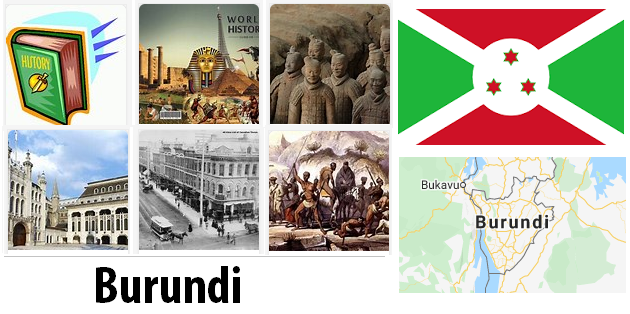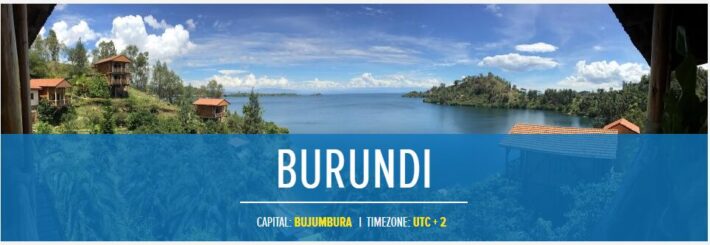Towards the fifteenth century from the Ethiopian plateau many tribes of shepherds, driven out by the Abyssinians, emigrated to the south. According to Abbreviationfinder, an acronym site which also features history of Burundi, they crossed the steppes that stretch west of Lake Victoria, crossed the valley of the Kagera river and climbed the plateaus that stretch between the Kivu and Tanganyika lakes. On the high pastures the shepherds found an ideal environment for their herds and settled there.
They, representatives of three lineages, the Batua, the Bahutu and the Vatussi, arrived in the country at different times; the Batua came first and then the others. The Batua, real pygmies for their short stature, were the most primitive and lived essentially on hunting and fishing. Those who managed to evolve devoted themselves to the manufacture of the vases.
From the 10th to the 15th century the Bahutus arrived; they cut down most of the forests to cultivate the land; they were very fond of justice and hated the ignorant, savage and violent Batua.
Then it was the turn of the high Vatussi, of uncertain origin, who, strong and astute, dominated the territory for centuries by imposing their customs. Below them arose the two kingdoms of Rwanda and Urundi.
Only in the late 1800s did this territory become the subject of exploration by Europeans, first of all Germans, and in fact it immediately became part of German East Africa. But during the First World War it was occupied by Belgium which then had it, as a mandate, by the League of Nations in 1919. It was then the United Nations in 1946 that took it on mandate, but the trusteeship remained with the Belgians. The latter had to proceed very cautiously since the proud Vatussi never submitted to the Belgian trust administration.
A governor exercised power with the assistance of a council, attended by the two kings of Rwanda and Urundi. With the arrival of the whites, the exploitation of the land began in the country. Grandiose reforestation, canalization and drying up of marshy areas were carried out. The Belgians taught the indigenous people the most effective cultivation systems and introduced extensive cultivation of coffee and cotton throughout the territory. Breeding was also greatly improved. And in many areas of the country many streets and towns full of activities were built. The separation of the two states occurred in 1961 and independence was granted to them on July 1, 1962. The two states were called Burundi and Rwanda.
The kingdom of Burundi, born of the split from Rwanda, was led by King Mwami Mwabutsa IV.
As soon as independence was proclaimed it was immediately the scene of struggles and contrasts between the predominant Hutu lineage (Bahutu) and the less numerous Tutsi (Vatussi). Between 1962 and 1966 as many as seven governments took turns leading the country and were always at odds with the National Assembly, mostly Hutu.
At the beginning of 1964, a policy of openness towards popular China was applied, which was later believed to foment unrest in Zaire, by base rebels in Burundi.
This policy was stopped in 1965; then there was a popular uprising resulting in the killing of many Hutu MPs and the king himself was forced to flee to Switzerland.
In 1966 the king’s son self-crowned himself with the name of Ntare V but a few months later the young Prime Minister M. Micombero dismissed him and took over the government of the country, flanked by a National Committee.
In 1971 a Supreme Council of the Revolution was established. The following year a coup was attempted by the deposed king Ntare V, who had returned to the country. He was killed and Micombero implemented a severe, sinister military regime, although in truth Burundi always maintained excellent relations both with Belgium and with the other European states.
Tribal disagreements resumed more vehemently and a real war arose between Hutu and Tutsi which led to around 200,000 deaths and 10,000 refugees. But in addition to the disputes between Hutu and Tutsi, those between the northern and southern Tutsi, who held the highest positions of government, had to be registered.
Despite his tough military rule, Micombero was re-elected in 1974, although he was never up to controlling the integration of tribes and overcoming the enormous economic difficulties that made the country one of the poorest in the world.
Another coup d’état, that of 1 November 1976, replaced Micombero with colonel JB Bagaza. He allowed and favored the return of refugees and tried to implement some reforms; his main intention was to undo the differences between the two conflicting tribes. The agrarian reform did not solve the problems and the policy of demilitarization was undertaken with the dissolution of the Junta in power and the enhancement of the Union pour le Progres National.
In 1981 a new Constitution was introduced; legislative elections took place in 1982 and presidential elections in 1984. Bagaza was elected president with a five-year term. In this same year Bagaza loosened relations with the Catholic Church, accused of fomenting the Hutu opposition. As a consequence, the aid of the western countries diminished, also thanks to the close relations that Burundi always maintained with the Soviet Union, popular China and Libya. And when a coup occurred on September 3, 1987 that brought a member of the family of the late Micombero, Major P. Buyoya, to the top, the Catholic Church was the one that was most happy.
Buyoya first suspended the Constitution, then entrusted power to the hands of “Comitè Militaire de Salut National”, then promised improvements in both the economic and legal spheres.
In August 1988 in the north-east of the country, mainly Hutu, there were tribal struggles that resulted in a massacre, also due to the intervention of the army, mostly Tutsi.
Buyoya embarked on a powerful national reconciliation policy by appointing a Hutu majority government while the army remained in the hands of the Tutsis. The aim was to be able to eliminate any ethnic conflict, but to date it does not seem to have had positive results yet.
In 1991 a “National Charter” was instituted against all discrimination and exclusion. With the new Constitution of 1992, multipartism was introduced: the “Front pour la Democratie au Burundi” was founded by the political exiles.
In the general elections of 1993, this “Front” gained the majority while the presidential elections were the prerogative of M. Ndadaye, Hutu, who appointed moderate Tutsi as head of the S. Kinigi government. This authorized JB Bagaza to return home, proclaimed an amnesty for terrorists and, without altering too much the composition of the government, made many replacements in the public administration.
On October 20, 1993, following a failed coup, Ndadaya was killed. This caused a major rift between the government elements and in fact, a short time later, ethnic clashes recurred and there were more than 100,000 deaths and thousands of refugees who, in the camps where they were welcomed, soon formed gangs of terrorists.
In 1994 the National Assembly, protected by the French army, proceeded to appoint the new president in the person of C. Ntaryamira, Hutu, who in turn appointed the head of government A. Kanyenkiko, Tutsi. But it didn’t last long. In April 1994 both Ntaryamira and Habyarinama, president of Rwanda, perished in an attack. The result was such a violent situation that the country had to be militarized.
In May of the same year several humanitarian organizations intervened to draw the attention of all world public opinion, in order to end all the massacres.
In September 1994 the new president was S. Ntibantunganya and the old prime minister was replaced by the new A. Nduwayo in February 1995.
In April 1996, both the United States and the European Union decided to suspend financial aid, which complicated the situation considerably.
On July 25, 1996 Bagaza, with a coup, returned to power; elected Buyoya as interim president and suspended all constitutional freedoms.
In the summer of 1997. amidst many difficulties, a peace process started. In June 1998 Buyoya partially restored the Constitution and in January 1999 a new peace conference was opened in Arusha, Tanzania which, from the outset, highlighted the incurable conflicts of the two sides.

